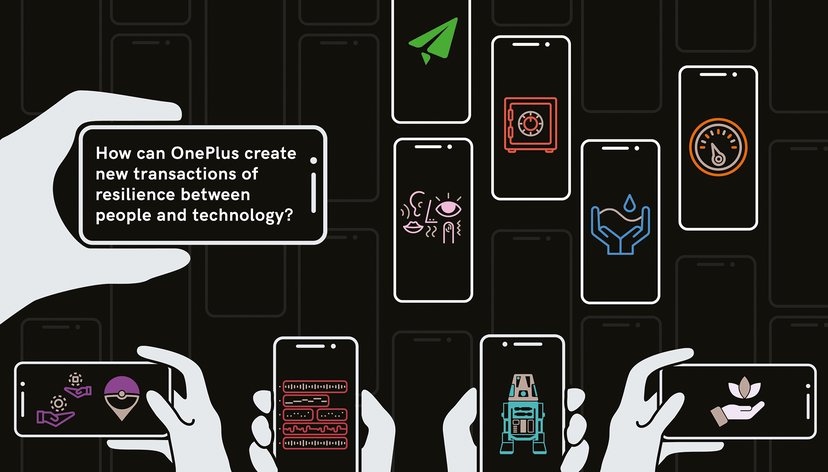
Dr Gerard Briscoe
- Research Fellow
Gerard’s research involves exploring speculative design for equity in emerging technologies for all abilities, which requires understanding digital materiality, resistance to digitisation and cyborg post-humanism.
Gerard's research focuses on exploring technology futures in establishing innovation ecosystems for the longevity economy. This involves exploring inclusive design for equity in emerging technologies for all abilities, which requires understanding themes in digital materiality, resistance to digitisation and cyborg post-humanism.
He developed his expertise in interdisciplinary design research from over a decade’s experience with inter- and multi-disciplinary research. He gained his B/MEng in Computing, and PhD in Electrical and Electronic Engineering, from Imperial College London.
Key details
School, Centre or Area
Expertise
Gallery
More information
Research
Gerard's research activities centre on interdisciplinary design research at the fringe of the computing sciences with design practices. He is interested in designing digital cultures, the practices and socio-cultural meanings emerging from the use of digital technologies, to create preferable futures. Digital can be considered a marker of culture, intertwined with artefacts and systems of communication that most clearly demarcate our contemporary way of life. Distinct phenomena of digital cultures have emerged, including the shrinking of physical distance and the dissolution of material reality. They encompass ways of thinking and doing that are embodied within digital technologies, which can be dominated by tech-totalitarianism. We can therefore consider the potential of designing digital cultures to explore creating preferable futures, rather than probable tech-totalitarian ones.
First, fundamentally re-understanding the distinction between humans and digital machines, including considering through ‘cyborg post-humanism’ the ever-growing lack of control with our increasingly interdependent digital limbs. Then, the counter perspective of ‘resistance to digitisation’, through prevalent examples such as business cards. They remain un-digitised despite the changing nature of networking arising from increasing connectivity. Also, exploring ‘digital materiality’ to counterbalance the dissolution of material reality, crafting physical artefacts with Internet connectivity that embody congruent digital shadows.
Practice
Gerard has a practise in creative coding, in which software is the result of a modern craft. He is interested in crafting solutions-based experiences, known tools and available information. As a coding artisan, he selects appropriate tools and builds software with them, producing digital objects, rather than the physical objects of other craft practices. As a coder, like many artisans, he uses tools to make new tools to progress my practice.
Examples of this practice include a purely client-side Big Data web app and website,'What the Hell?’, which identifies the ownership of brands and subsidiaries.
He has also developed an E-mail Relay that maintains work e-mails within working hours by delaying outgoing email when not sent during pre-defined working hours, and hiding incoming email that arrives outside of working hours by effectively overcoming the IMAP immutability property.
Recently he has worked on Corona Trends website, which shows the trend of Covid-19 in key cities around the world. It shows the risk from exponential growth trends, which is perhaps the most challenging aspect of pandemics.
Research funding
Global Health Index (Extension)
Corporate, WSP Engineering (2018–19)
This supported an extension of design research between Big Data and design thinking
Choreograthons: Hackathons For Dance
EPSRC, Digital Economy (2015)
This supported my research and knowledge exchange between the computing sciences and creative industries
Creative Gardens: Placement
EPSRC, Sustainable Societies Network (2014–15)
This supported my Visiting Fellowship at the Glasgow School of Art.
Designing Future Economies
EPSRC, Digital Economy, Networking Grant (2014–15)
This supported my interdisciplinary design-computing research.
Open Philosophies for Associate Autopoietic Digital
EU Network of Excellence (2007–10)
This funded my first post-doctoral interdisciplinary research between the computing and social sciences.
Digital Business Ecosystems
EU Integrated Project (2004–7)
This funded my interdisciplinary PhD between the computing and natural sciences.
Awards
Pairing Scheme, Royal Society, 2012
Best Tutorial, ACM Management of Digital Ecosystems Conference, 2010
Best Track Paper, Digital Ecosystems and Technologies Conference, 2008
Current and recent projects
Enhancing Future Community Connectivity for Ageing Well in Place: Co-designing technology and environments, 2022
To future proof 'ageing in place' for our future selves, there is an urgent need to understand the challenges and opportunities of Technology Futures for increased connectivity. This equally requires a design-led approach to 'future proofing' older people's use of technology to advance and enable preferable Technology Futures. The major objective of the project is to investigate how a people-driven and design-led understanding of technology can enhance community building, increasing social connectivity among future ageing generations. This includes exploring what community connectivity would look like if co-designed with current and future older people, and how community and connectivity can be co-designed digitally.
Design Age Institute, 2020
Within this project, Gerard focuses on exploring technology futures to humanise emerging digital technology through inclusive and speculative design with older people, creating credible preferable Technology Futures for ageing societies. The approach involves exploring emerging digital technologies for inclusive Technology Futures through interdisciplinary design-computing research, including Technology Foresight and Roadmapping. Understanding their potential for equitable socially-sustainable inclusive digital cultures.
Global Health Index, 2018
For this project, Gerard developed an interdisciplinary understanding, integrated Design Thinking and Big Data, to design an index to demonstrate thought leadership for future-ready healthcare. Climate change, human epidemics, population growth and ageing, and urban migration are only a few of the health issues that are placing ever greater stresses on healthcare around the world. With over half the world’s population now living in cities, which is expected to increase to 70 per cent by 2050, rapid urbanisation has become a defining feature of the twenty-first century. So, HHCD partnered with international engineering firm WSP and strategic partner SALUS Global Knowledge Exchange to design an index that compares the preparedness of major cities to existing health challenges and emerging healthcare needs of their populations. The index considers how ‘future-ready’ the healthcare infrastructures of cities are for emerging challenges, which include buildings and estates, healthcare services, treatment, preventative actions and health promotion.
Publications, exhibitions, other outcomes
Briscoe, G. & Ramster, G. (2019), Designing a global index of future-readiness for healthcare challenges, in ‘European Halthcare Design’.
Ramster, G. & Briscoe, G. (2019), Visualising a global index of future-readiness for healthcare challenges (poster), in ‘European Halthcare Design’.
Blom, J., French, T. & Briscoe, G. (2017), Towards the aesthetics of prosthetics: Co-design for expressing personal identity, in ‘Making Futures Conference’.
Briscoe, G. (2017), Designing digital omnitemporality: Tyranny of surveillance (poster), in ‘Data Science for Cyber-Security Workshop’.
Briscoe, G. & Aste, T. (2017), Blockchains: Distributed consensus, in ‘P2P Financial Systems International Workshop’.
Briscoe, G. & Hon, J. (2017), Choreograthons: Hackathon model for dance composition, in ‘International Conference on Technology, Innovation, Entrepreneurship and Education’.
Briscoe, G. (2016), Designing knowledge exchange: Towards understanding the landscape between arts and humanities research and the creative economy, in ‘Challenges and Best Practice in Co-Production Conference’.
Briscoe, G. (2016), Visualising scale-invariant comparative energy use, in ‘TEDDINET Energy Feedback Symposium’.
Briscoe, G. (2016), Who controls the cyborg?, in ‘4S/EASST Science + Technology By Other Means Conference’.
Briscoe, G. & Blom, J. (2016), Touchscreen thimbles: Enabling intuitive interaction, in ‘Smart Portable, Wearable, Implantable and Disability-oriented Devices and Systems’.
Briscoe, G. & Speed, C. (2016), Visualising digital omnipresence: Ghosts of futures past, in ‘The Transdisciplinary Imaging Conference At The Intersection Between Art, Science And Culture’.
Fullarton Pegg, F., Mulligan, C., Briscoe, G., Lockwood, J. & Freer, D. (2016), Artefact as bridging concept for designing future economies, in ‘ACM Computer-Human Interaction, Attending To Objects As Outcomes Of Design Research Workshop’.
Briscoe, G. (2015), Creative gardens: Socially-sustainablity, in ‘Future Connections 2015’.
Briscoe, G. (2015), Creative gardens: Socially-sustainablity (poster), in ‘Future Connections 2015’.
Briscoe, G. & Fullarton Pegg, F. (2015), Socially-sustainable smartphone (artefact), in ‘Sharing Design: Utopia of Culture Makers Exhibit, International Culture Makers Joint Design Exhibition (Milan Design Week)’.
Briscoe, G., James, S. & Fullarton Pegg, F. (2015), Digital materiality of the internet-of-things, in ‘Material Culture in Action’.
Briscoe, G., Mulligan, C., Fullarton Pegg, F. & Lockwood, J. (2015), Designing future economies: Boundary objects for visualising sustainable innovation, in ‘iJADE Sustainability in Arts Education Conference’.
Briscoe, G. (2014), Digital innovation: The hackathon phenomenon, in ‘Working Papers of The Sustainable Society Network+, ISSN 2052-8604’.
Briscoe, G. (2014), Digital magic: Model for innovation, in ‘Synergize Conference’.
Briscoe, G. & Plumbley, M. (2014), Creating cultures of innovation: Digital creative industries, in ‘AHRC Knowledge Exchange Conference’.
Briscoe, G. & Speed, C. (2014), Ghosts of futures past, in ‘Information Overload Conference’.
Briscoe, G., Freer, D., Finnemore, A., Smith, P. & Pegg, F. F. (2014), Resistance to digitisation: Curated memory cards (artefact), in ‘ACM Designing Interactive Systems Conference, StoryStorm Workshop’.
Garner, C., Bolfek-Radovani, J., Fogg, H., Riedel, J., Ternouth, P., Briscoe, G., Dima, M., Shiach, M. & Virani, T. (2014), London creative and digital fusion, ERDF London Creative and Digital Fusion programme.





